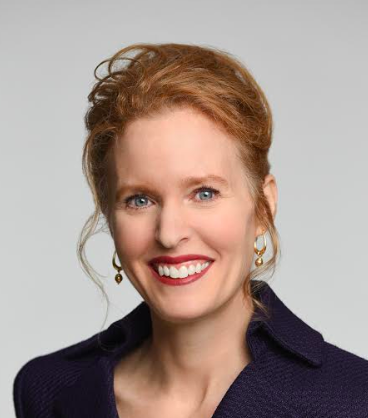
Those golden arches of McDonald’s, among the most recognized logos in the word, are actually a catenary arch, a super strong architectural feature that has helped ensure resilience buildings for centuries. So, does the ubiquitous yellow pair that graces roughly 37,000 McDonald’s worldwide represent a company resilient to current and future changes?
At last week’s Global Climate Action Summit, I sat down with Keith Kenny, McDonald’s Global Vice President of Sustainability to learn about the company’s resilience story. He asserted that climate resilience is both an environmental and economic imperative for the company.
“Farmer livelihoods and related thriving rural communities are important to us because our restaurants are in those communities,” he explained. “That gets forgotten when we speak about sustainable agriculture. Farmers need to be able to reinvest in their business. Just as we invest in them.”
That belief proved to be McDonald’s inspiration for its Flagship Farmers Program, which connects farmers interested in continuous improvement and sustainable practices. Its platform notes that climate change is affecting agriculture, causing droughts, floods, more storms and heat waves. The program encourages farmers “to adapt and develop our farming systems to be more resilient to these changing environmental conditions.”
Publicly recognizing these hazards caused by changes in climate – and predicted to grow over time – offers a good start on the path to making climate resilience a key feature of the business.
Keith pointed out that McDonald’s invests in supply chain projects with a 20-30 year payback, which makes them both climate change sensitive and focused on resilience to ensure year-over-year payback. Unlike other retailers with tens of thousands of items on their shelves, “15-to-20 items represent 70 percent of what we sell,” he said. “We have long-term relationships with our suppliers. Most of them have grown their business as we have grown ours.”
This is key, for instance, for beef consistency – patty to patty – throughout the world and also for long oblong potato varietals conducive to harvest times, storage and its fries.
This is a significant improvement from McDonald’s supply chain response of about five years ago. Then, under different leadership, its response to a question of what McDonald’s was doing to adapt its supply chain to climate change was to exclaim, “We’ll just tell Canada to get ready to grow canola if it gets to hot and dry to grow it in the lower 48.”
Its fresh approach may bring McDonald’s more into the climate-resilient supply chain vanguard with such companies as Mars Inc. and Coca Cola that have collaborated with the nonprofit Business for Social Responsibility to launch a Climate-Resilient Value Chains Leaders Platform announced at last week’s Summit.
Though McDonald’s has yet to officially join that initiative, it is among a group of food companies including Keurig Green Mountain, Heinz and Chipotle making initial strides on climate resilience. And, like other big companies, climate action to reduce greenhouse gasses is becoming more of a priority. Last year, McDonald’s announced it was partnering with franchisees and suppliers to reduce greenhouse gas emissions related to its restaurants and offices by 36 percent by 2030 from a 2015 base year in a new strategy to address climate change. It also committed to a 31 percent decrease in emissions intensity per metric ton of food and packaging across its supply chain by 2030 from 2015 levels, and the combined target has been approved by the Science Based Targets initiative.
Keith said innovation is key to McDonald’s resilience and sees soil health as a “huge opportunity” that the company is exploring with such partners as the World Wildlife Fund and the University of Arizona. In addition, he enumerated the many collateral benefits of pursuing adaptive multi-habitat grazing – moving cow herds from paddock to paddock – that allows soil to regenerate by giving native plants a chance to establish deeper roots. This enhances carbon sequestration and water retention and filtration while increasing productivity with more animals grazed on the same land.
Keith also offered another example of how its thinking about climate change and resilience has changed, and it reflects that McDonald’s is a surf-and-turf restaurant. Cod fished from the North Atlantic were a key element of McDonald’s filet-o-fish sandwich until environmental organization Greenpeace brought McDonald’s and others to task for fishing in a warming ocean where melting ice flows are exposing previously frozen areas. Keith was invited by Greenpeace to journey on its Arctic Sunrise ship to see firsthand “what the fish are up to” in a climate-changed world.
In May 2016, McDonald’s and more than a dozen other seafood industry giants joined forces to protect a large area of the Arctic from increased fishing. The voluntary agreement commits the companies from expanding cod fishing into a previously ice-covered portion of the Northern Barents Sea in the Arctic.
Image credit: McDonald's

Joyce Coffee, LEED AP, is founder and President of Climate Resilience Consulting. She is an accomplished organizational strategist and visionary leader with over 25 years of domestic and international experience in the corporate, government and non-profit sectors implementing resilience and sustainability strategies, management systems, performance measurement, partnerships, benchmarking and reporting.














